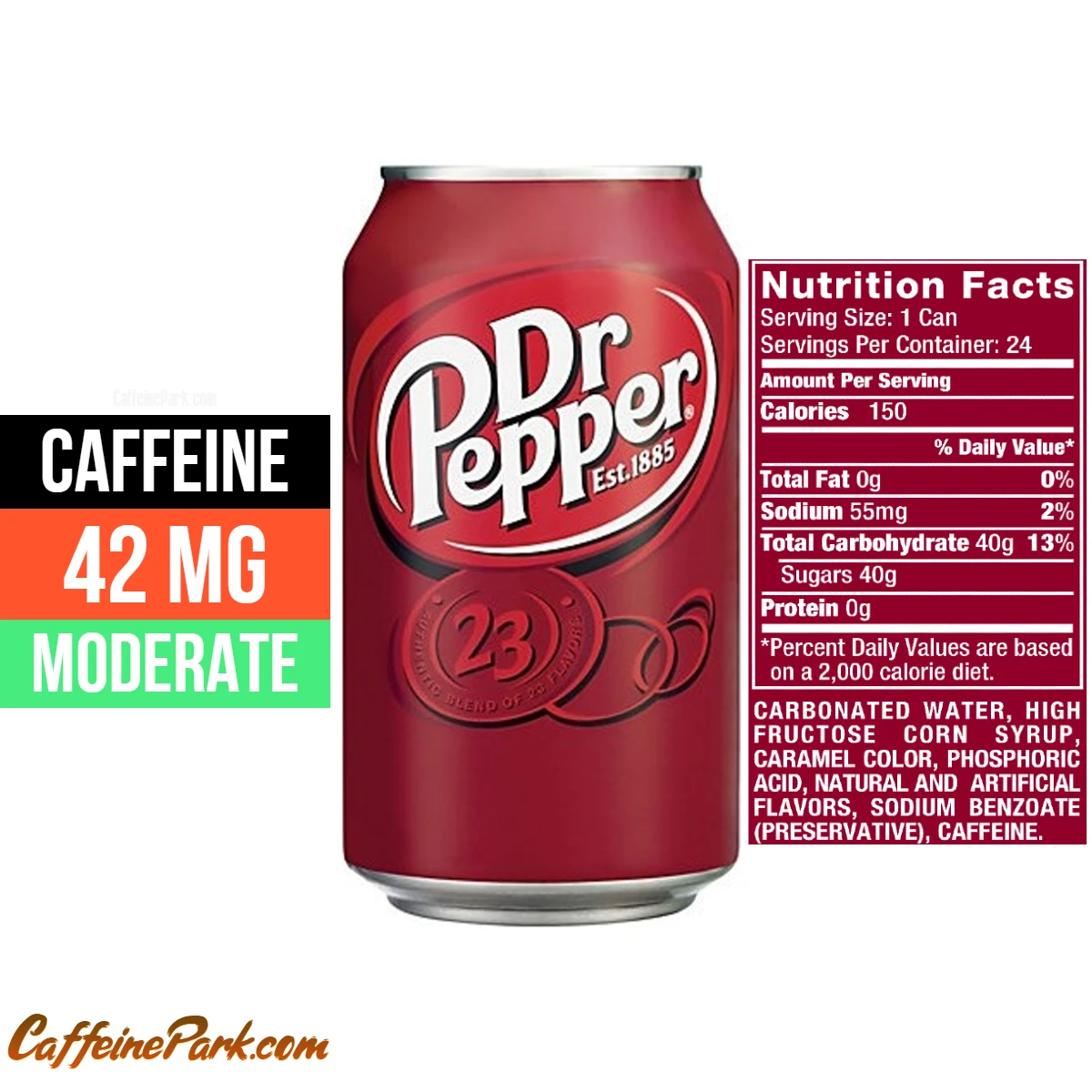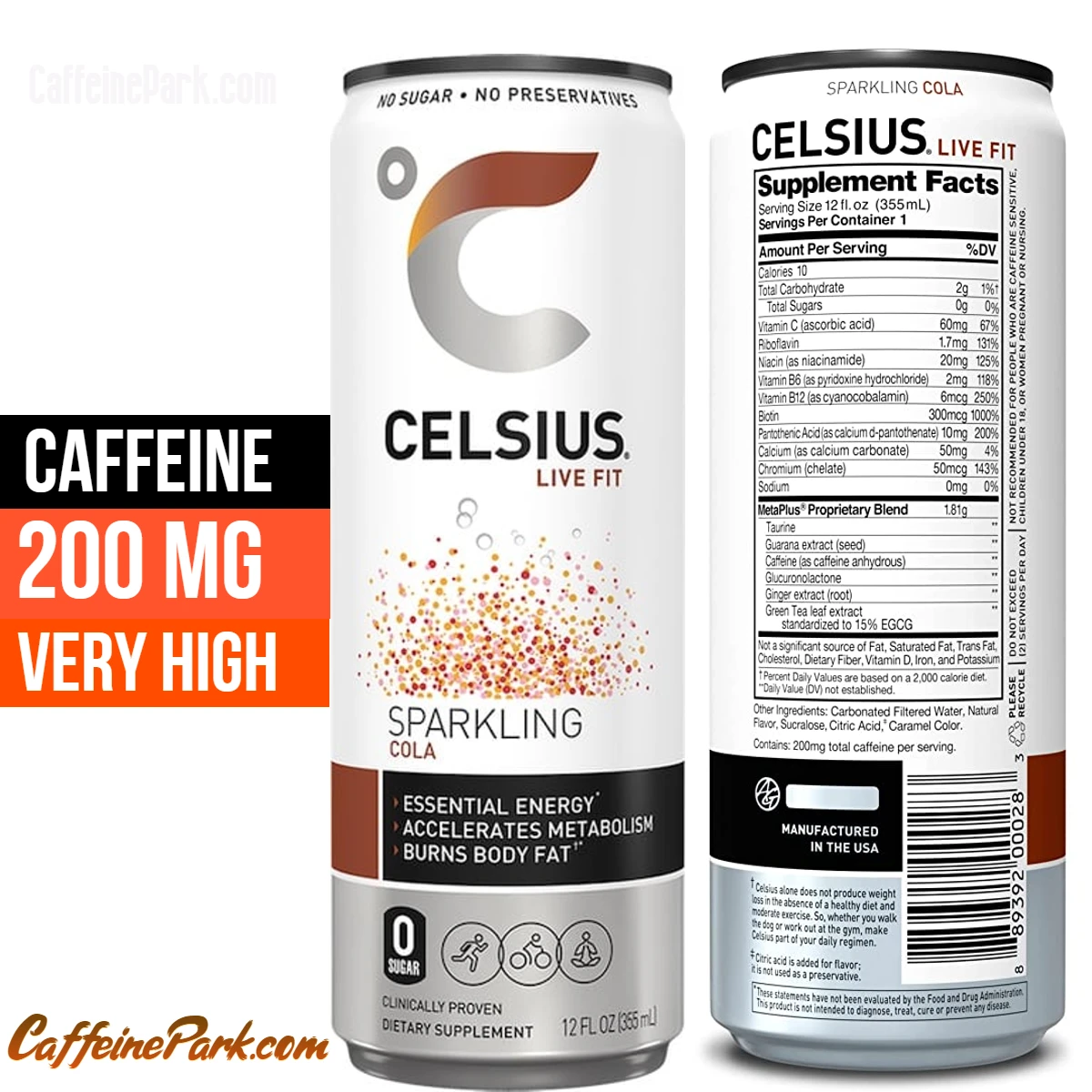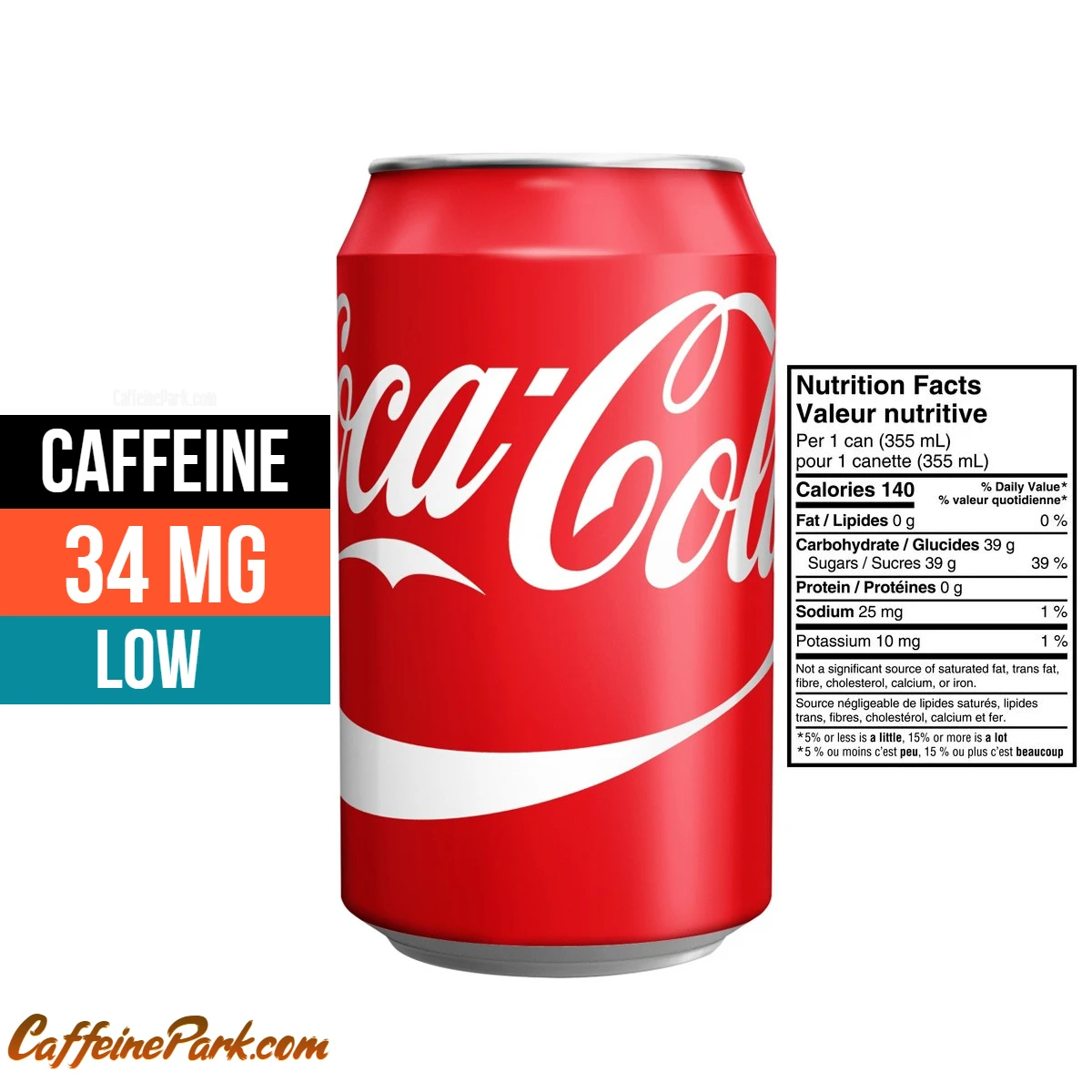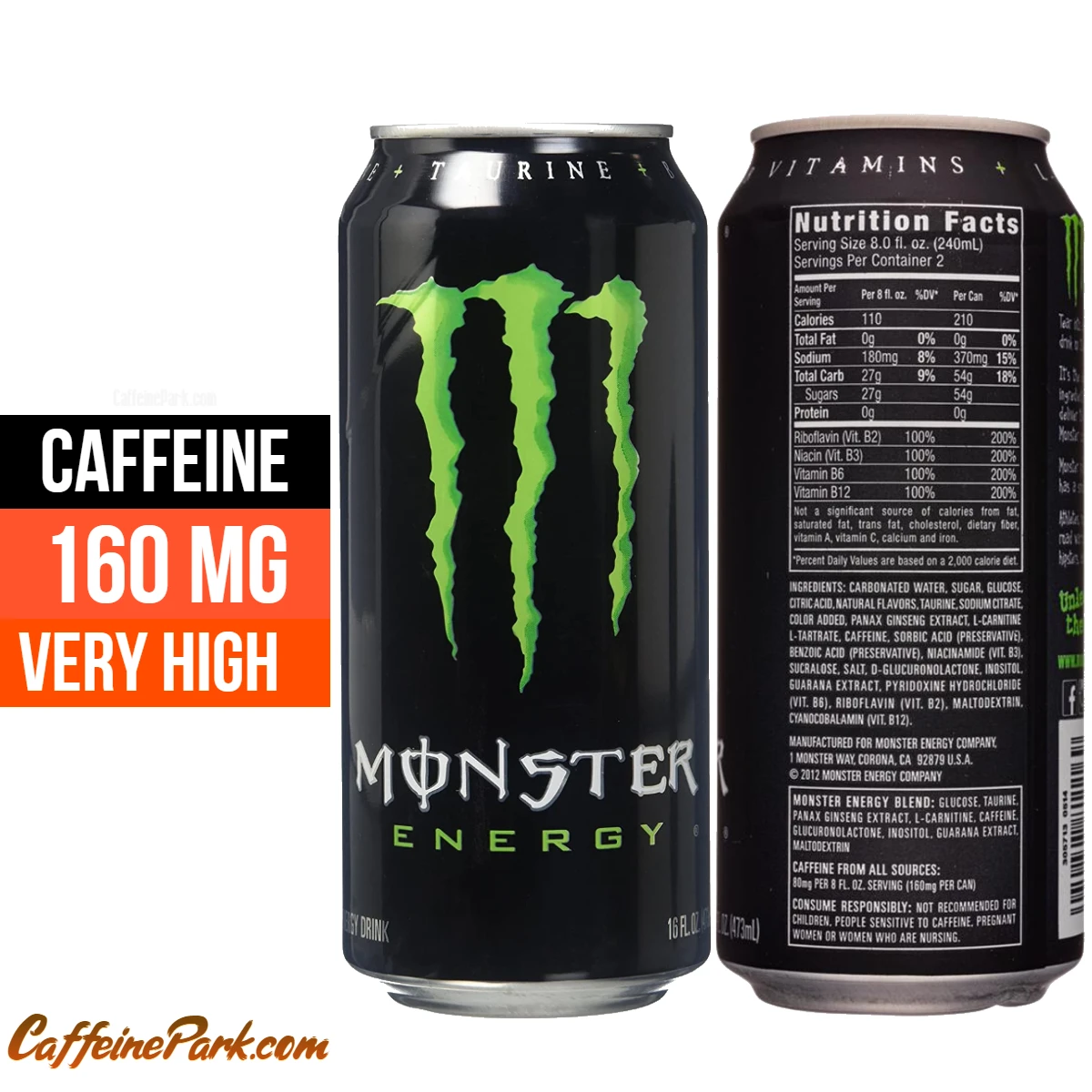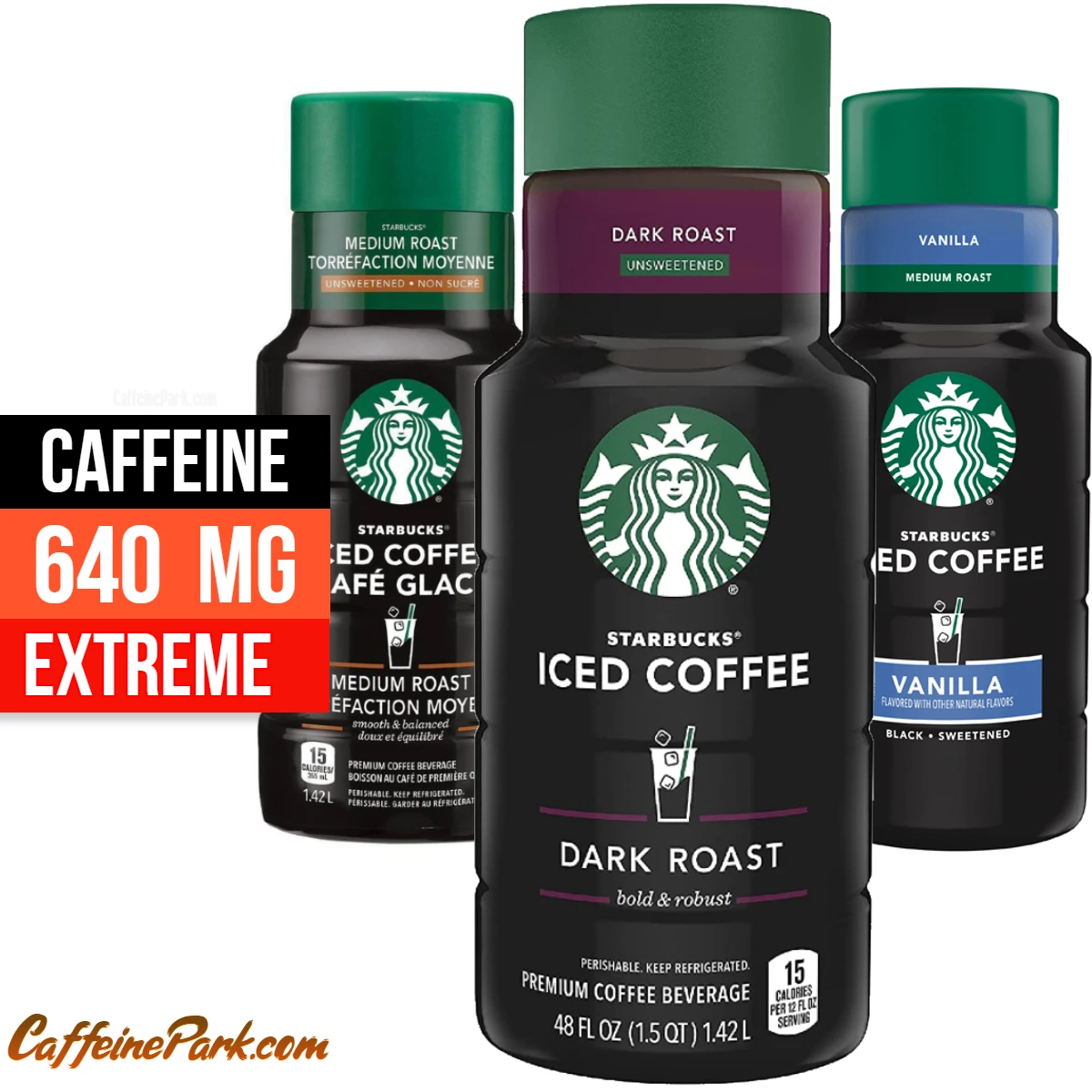
Fanta is a caffeine-free option and a popular brand of fruit-flavored carbonated soft drinks that is owned and produced by The Coca-Cola Company. It is available in a variety of flavors, with the most common being orange. Fanta is known for its sweet and tangy taste and is often enjoyed as a refreshing and thirst-quenching beverage.
One of the things that many people may be interested in when it comes to Fanta is the amount of caffeine that it contains. Caffeine is a natural stimulant that is found in many foods and beverages, and it can have a range of effects on the body, including increased alertness, energy, and focus.
The amount of caffeine in Fanta varies depending on the specific flavor and the country in which it is sold. Original Fanta does not any caffeine and is caffeine-free, However, most varieties of Fanta contain very low amounts of caffeine, typically less than 10 milligrams per serving. This is much less than the amount of caffeine found in a cup of coffee, which typically contains around 95 milligrams of caffeine.
Does Fanta have caffeine?
No, Fanta is a non-Caffeinated (Caffeine-Free) and non-carbonated drink and Fanta is available in a Zero Sugar formula in some markets, which is calorie-free.
| Serving size | Caffeine Amount | Calories | Caffeine strength |
|---|---|---|---|
| 100ml | 0mg | 19 | CAFFEINE FREE |
| 12 fl oz can | 0 mg | 160 | CAFFEINE FREE |
- Caffeine Amount: 0 mg
- Caffeine strength: CAFFEINE FREE
- Calories: 160
- Serving size: 12 fl oz can
- Sugar: 44 g
Ingredients in Fanta
- Carbonated Water
- High Fructose Corn Syrup
- Citric Acid
- Sodium Benzoate (to Protect Taste)
- Natural Flavors
- modified Food Starch
- Sodium Polyphosphates
- Glycerol Ester Of Rosin
- Yellow 6
- Red 40
Compare caffeine in Fanta Vs. Popular Soda
| Popular Soda | Serving Size | Caffeine |
|---|---|---|
| Fanta | 12 fl oz | 0mg |
| Coke | 12 fl oz | 34mg |
| Pepsi | 12 fl oz | 38mg |
| 7-Up | 12 fl oz | 0mg |
| Mountain Dew | 12 fl oz | 54mg |
| Sprite | 12 fl oz | 0mg |
Review
Fanta is a brand of fruit-flavored carbonated soft drinks that are produced and owned by The Coca-Cola Company. Fanta originated in Germany in 1941 as a result of a trade restriction on Coca-Cola syrup. Today, it is available in many countries worldwide and comes in a variety of flavors, with the most common being orange. In this review, we will discuss the history, taste and flavor, ingredients and nutrition, benefits, side effects, price and availability, comparison to others, customer reviews, and pros and cons of Fanta.
History
Fanta was first created in Germany in 1941 by The Coca-Cola Company as a result of a trade restriction on Coca-Cola syrup. The company had to find a new way to produce a soft drink without using syrup, so they began experimenting with different flavors and ingredients. The name “Fanta” is said to have come from the German word “Fantasie,” which means “imagination.”
Fanta quickly became popular in Germany and was soon being exported to other countries. In the decades that followed, the company introduced new flavors and varieties of Fanta, and it became one of the most popular soft drink brands in the world. Today, Fanta is available in over 190 countries and is enjoyed by millions of people worldwide.
Taste and Flavor Options
Fanta is known for its sweet and tangy taste, and it is often enjoyed as a refreshing and thirst-quenching beverage. The most common flavor of Fanta is orange, but it also comes in a variety of other flavors, including grape, apple, pineapple, and strawberry. Each flavor has its own unique taste, and many people enjoy trying different varieties to see which one they like the best.
The specific flavor of Fanta can vary depending on the specific fruit flavor, and the brand uses a combination of natural and artificial flavors to achieve the desired taste.
Orange Flavor
The orange flavor of Fanta is perhaps the most iconic and well-known of the brand’s flavors. It is sweet and citrusy, with a refreshing and thirst-quenching taste. The orange flavor is made with a combination of natural and artificial flavors, and it is often described as being a more intense and flavorful version of orange soda.
Grape Flavor
The grape flavor of Fanta is sweet and fruity, with a slightly bolder and more complex flavor profile compared to the orange flavor. It is made with a combination of natural and artificial flavors, and it has a taste that is reminiscent of grape-flavored candy or soda.
Strawberry Flavor
The strawberry flavor of Fanta is sweet and juicy, with a light and refreshing taste. It is made with a combination of natural and artificial flavors, and it has a taste that is similar to strawberry-flavored candy or soda.
Pineapple Flavor
The pineapple flavor of Fanta is tropical and sweet, with a distinct and bold flavor. It is made with a combination of natural and artificial flavors, and it has a taste that is reminiscent of pineapple-flavored candy or soda.
Nutritional Value
Fanta is a sweetened carbonated beverage, and as such, it is not a particularly nutritious choice. One 12-ounce (355 ml) serving of Fanta Orange contains 160 calories, 45 grams of carbohydrates (all from sugar), and 0 grams of protein or fat. Fanta does not contain any significant amounts of vitamins or minerals.
Sugar Content
One of the main nutritional concerns with Fanta is its high Sugar Content. One 12-ounce (355 ml) serving of Fanta Orange contains 44 grams of sugar, which is more than the recommended daily limit for added sugars for most adults. The high sugar content of Fanta and other sweetened beverages has been linked to a variety of health problems, including obesity, diabetes, and dental cavities.
Artificial Sweeteners
Some flavors of Fanta are sweetened with artificial sweeteners, which are sugar substitutes that are used to provide a sweet taste without adding calories. Artificial sweeteners are typically much sweeter than sugar, so they can be used in smaller amounts to achieve the same level of sweetness.
Some common artificial sweeteners used in Fanta and other beverages include aspartame, sucralose, and acesulfame potassium. Artificial sweeteners have been the subject of controversy, with some studies suggesting that they may have negative health effects. However, the majority of research suggests that artificial sweeteners are safe when consumed in moderation.
Caffeine Content
Fanta Orange does not contain caffeine. It is a fruit-flavored carbonated soft drink. If you’re looking for a beverage with caffeine, you may want to try Coffee, Tea, or Cola.
Benefits
Fanta is a non-alcoholic beverage that can be enjoyed by people of all ages. It is a good source of hydration, and the carbonation can help to quench thirst and refresh the palate. The natural flavors in Fanta can also provide a boost of energy and improve mood.
Side effects
Fanta contains high levels of sugar which can lead to weight gain and tooth decay. Consuming Fanta regularly can also lead to an increased risk of diabetes and heart disease. Additionally, consuming too much Fanta can lead to caffeine addiction, which can cause side effects such as jitteriness, anxiety, and insomnia.
Price and Availability
Fanta is widely available in most countries and can be purchased at most convenience stores, supermarkets, and online retailers. The price of Fanta varies depending on the location and the size of the package. On average, a 12-ounce can of Fanta costs around $1.
Packaging
Fanta is available in a variety of packaging options, including cans, bottles, and multi-pack boxes. The packaging design for Fanta has changed over the years, with the brand using a variety of colorful and eye-catching designs to attract customers.
Comparison to others
Fanta is one of the most popular fruit-flavored soft drinks in the world and is often compared to other popular brands such as Pepsi and Sprite. In terms of taste, Fanta is generally considered to have a sweeter and more tangy taste than these other brands, with a strong fruity flavor that is distinct from other soft drinks. Some people prefer the more crisp and refreshing taste of Pepsi or Sprite, which has a less sweet and more subtle fruit flavor.
In terms of ingredients and nutrition, Fanta contains high fructose corn syrup and sodium benzoate, while Pepsi and Sprite have high fructose corn syrup as well. Fanta also tends to have more calories and sugar than Pepsi and Sprite.
In terms of price and availability, Fanta is widely available in most countries and can be purchased at most convenience stores, supermarkets, and online retailers. The price of Fanta varies depending on the location and the size of the package. It is generally considered to be more affordable than some premium brands, such as Coca-Cola.
In terms of customer reviews, Fanta is a well-liked brand and receives mostly positive reviews from customers. Many people enjoy the sweet and tangy taste of Fanta and find it to be a refreshing and thirst-quenching beverage. However, some people may find the taste too sweet or may prefer the taste of other brands.
In conclusion, Fanta is a popular fruit-flavored soft drink that is known for its sweet and tangy taste. It is often compared to other popular brands such as Pepsi and Sprite and is generally considered to have a sweeter and more tangy taste than these other brands. Fanta is widely available and affordable and is well-liked by customers, but also has a high sugar content, which can be a concern for some.
Marketing and Advertising
Fanta has a long history of marketing and advertising campaigns, and the brand has used a variety of tactics over the years to promote its products. Some of the most well-known Fanta advertisements have featured catchy jingles and colorful characters, and the brand has also used social media, sponsorships, and other marketing techniques to reach its target audience.
In recent years, Fanta has focused on reaching younger consumers through digital marketing campaigns and partnerships with popular social media influencers. The brand has also used its social media channels to connect with its audience and promote its products through interactive campaigns and contests.
Controversies
Like many other large corporations, Fanta has faced its share of controversies over the years. One of the main criticisms of the brand has been its environmental impact, as the production and disposal of plastic bottles used for Fanta and other bottled beverages can contribute to pollution and other environmental issues. The Coca-Cola Company, which owns the Fanta brand, has faced criticism for its practices related to water use, waste management, and other environmental issues.
In addition to environmental concerns, Fanta has also faced criticism for its high sugar content and lack of nutritional value. Some health experts have argued that the high sugar content of Fanta and other sweetened beverages can contribute to the rise in obesity and other health problems.
Alternatives
If you are looking for a fruity beverage with less sugar and fewer calories, there are a few alternatives to Fanta that you might want to consider. These alternatives include:
- Sparkling water with natural fruit flavors: Sparkling water with natural fruit flavors is a good option for people who want a fruity, carbonated beverage without the added sugar and calories of a traditional soft drink. Many brands offer a variety of fruit flavors to choose from, and you can add your own fresh fruit slices for additional flavor.
- Fruit-infused water: Another option is to infuse water with your favorite fruits to create a refreshing, low-calorie beverage. Simply add slices of your preferred fruits to a pitcher of water and let it infuse for a few hours before serving.
- Iced tea or herbal tea: If you enjoy a caffeine boost, you might want to try iced tea or herbal tea as an alternative to Fanta. Both iced tea and herbal tea come in a variety of flavors, and they can be sweetened with natural sweeteners like honey or stevia if desired.
Customer Reviews
Fanta is a well-liked brand and receives mostly positive reviews from customers. Many people enjoy the sweet and tangy taste of Fanta and find it to be a refreshing and thirst-quenching beverage. The natural flavors in Fanta can also provide a boost of energy and improve mood. Many customers also appreciate the variety of flavors that Fanta offers, which allows them to try different tastes.
However, some people may find the taste too sweet or may prefer the taste of other brands. Additionally, some customers may be concerned about the high sugar content of Fanta, which can lead to weight gain and tooth decay if consumed in excess.
Pros and Cons
Pros:
- -Fanta offers a variety of flavors that can please different taste buds
- -Fanta’s sweet and tangy taste can be refreshing and thirst-quenching
- -Fanta is widely available and affordable
- -Fanta can provide a boost of energy and improve mood
Cons
- -The high sugar content of Fanta can lead to weight gain and tooth decay if consumed in excess.
- -Some people may find the taste too sweet
- -Some customers may prefer the taste of other brands
In conclusion, Fanta is a popular fruit-flavored soft drink that is known for its sweet and tangy taste and variety of flavors. It is widely available and affordable but also has a high sugar content, which can be a concern for some. Overall, Fanta receives mostly positive reviews from customers, with many people enjoying the taste and energy boost that it provides.
FAQs
No, Fanta does not contain any caffeine. It is a caffeine-free soda option, making it a popular choice for those who prefer to avoid caffeine or have sensitivities to it.
Yes, all flavors of Fanta, including Orange, Grape, Strawberry, and others, are caffeine-free. Fanta offers a variety of fruity and refreshing soda options without the addition of caffeine.
Absolutely! Fanta is an excellent choice for individuals who are sensitive to caffeine. You can enjoy the wide range of Fanta flavors without worrying about any caffeine-related side effects.
Fanta is formulated as a caffeine-free beverage to provide consumers with a caffeine-free soda option. The focus of Fanta is on its fruity flavors and fizzy enjoyment rather than the stimulating effects of caffeine.
Fanta primarily consists of carbonated water, high fructose corn syrup, natural flavors, and various food additives. It’s always a good idea to review the full ingredient list if you have any specific dietary concerns or sensitivities.
Fanta, like other sodas, should be consumed in moderation as part of a balanced diet. While it is a caffeine-free option, it still contains sugar and calories, so it’s important to consider your overall intake of sugary beverages and make choices that align with your dietary needs and goals.
Is Fanta Grape caffeinated?
Fanta Grape does not contain caffeine. According to the nutritional information provided by The Coca-Cola Company, one 12-ounce (355 ml) serving of Fanta Grape contains 0 milligrams of caffeine.
Is Fanta vegan?
In general, Orange Fanta is considered to be vegan, as it does not contain any animal-derived ingredients. The ingredients in Orange Fanta include carbonated water, high fructose corn syrup, citric acid, natural flavors, sodium benzoate, and artificial colors (including Yellow 6). None of these ingredients are derived from animals, and they do not contain any animal-derived additives or processing aids.
However, it is worth noting that some flavors of Fanta may be produced in facilities that also process animal products, so there is a risk of cross-contamination. If you are a vegan and concerned about this, you may want to check the ingredient list and contact the manufacturer for more information. It is also worth noting that while most flavors of Fanta are vegan, some limited edition flavors or regional flavors may contain animal-derived ingredients or be produced in facilities that process animal products, so it is always a good idea to check the label or contact the manufacturer for specific information about a particular flavor.
Is Fanta gluten-free?
Orange Fanta is generally considered to be gluten-free, as it does not contain any gluten-containing ingredients. However, as with many food and beverage products, there is a risk of cross-contamination in facilities that process other products that contain gluten. If you are sensitive to gluten and concerned about this, you may want to check the ingredient list and contact the manufacturer for more information. It is also worth noting that while most flavors of Fanta are gluten-free, some limited edition flavors or regional flavors may contain gluten or be produced in facilities that process gluten-containing products, so it is always a good idea to check the label or contact the manufacturer for specific information about a particular flavor.
Is Fanta kosher?
It is difficult to determine whether or not Orange Fanta is kosher without knowing more about the specific production and ingredient sources. To be considered kosher, a product must be produced in accordance with Jewish dietary laws and must not contain any ingredients or come into contact with any equipment that is not kosher. The Coca-Cola Company, the manufacturer of Fanta, does not specifically market Fanta as a kosher product. However, many of the ingredients used in Fanta, including the carbonated water and natural flavors, are generally considered kosher. If you have concerns about the kosher status of Fanta or any other product, it is best to contact the manufacturer or a kosher certification agency for more information.
Is Fanta caffeine-free?
Some flavors of Fanta are caffeine-free, while others contain caffeine. Caffeine-free flavors of Fanta include orange, grape, and strawberry. Flavors of Fanta that contain caffeine include lemon and lime, and some of the limited edition flavors. You can check the ingredient list on the label of the specific flavor you are interested in to determine if it contains caffeine.
Can children drink Fanta?
Fanta is generally considered safe for children to drink in moderation. However, it is important to note that Fanta and other sweetened beverages should not be the primary source of hydration for children. Water and milk are generally better choices for hydration, and it is recommended that children and adults limit their intake of sugary drinks to reduce the risk of dental cavities and other health problems.
Is Fanta healthy?
Fanta and other sweetened beverages are not considered healthy choices for regular consumption. They are high in added sugars, which can contribute to weight gain, dental cavities, and other health problems when consumed in excess. It is important to drink water and other low-calorie, nutrient-rich beverages as part of a balanced diet. If you do choose to drink Fanta or other sweetened beverages, it is best to consume them in moderation as an occasional treat.
Is Fanta good for you?
Fanta is not a particularly nutritious choice, as it is a sweetened carbonated beverage that does not provide any significant amounts of vitamins or minerals. The high sugar content of Fanta and other sweetened beverages has been linked to a variety of health problems, including obesity, diabetes, and dental cavities. If you are concerned about your health and nutrition, it is generally recommended to limit your consumption of sweetened beverages like Fanta and choose water or other low-calorie, nutrient-rich beverages instead.
Read More:
